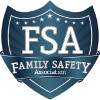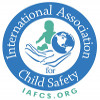General Baby Safety
The most important place to have a safe environment is in your home. Childproofing is not a one-time procedure, but a way of life. Your child is constantly evolving, so it is important that spotting the next potential hazard becomes instinctual. The best ways to prevent accidents from occurring are direct adult supervision and childproofing your home. Here are some tips to get you started:

Baby Nursery Safety
Crib Safety
Kitchen Safety
Bathroom Safety
Bedroom Safety (other than Nursery)
Family Room and Living Area Safety
Laundry Room and Garage Safety
Keep as many of your cleaning products in the laundry room as possible. Store them in a locked cabinet, out of reach of children.
Window Safety
Examine window areas carefully to make sure that children cannot climb on anything that would place them in danger of falling out an open window.
Banister, Balcony and Deck Safety
Although building codes are different throughout the country, these are basic safety guidelines for your stair balconies, banisters and outside decks.
Baby Safety Gates
Electrical Safety
Fire Safety
Pool Safety, Spa and Water
Drowning incidents (69%) occur when parental supervision fail and there is no other backup layer in use. Supervision remains your primary layer of protection. Have multiple layers of protection surrounding your pool, spa and water accents.
Never leave a child unattended in or near any body of water even for a second.
Firearm Safety
More children are killed every year playing with firearms found in the home than an intruder killed in self-defense. If you decide to keep firearms in your home, keep them out of sight and reach of your children, and follow some basic safety precautions.
Final Note
Our Testimonials
Many people put-off baby proofing because they do not have the time- there is absolutely no excuse for that. I have taken care of patients who have their babies fall down stairs, choke on door stoppers, and pull down furniture onto themselves. This can be prevented. And the service is very affordable- the only additional cost versus doing it yopurself is the labor cost.Thank you to Baby Safe Homes for providing an excellent service to me and my patients.
Hi all. I just wanted to let you know that we recently used Baby Safe Homes to childproof our house. More than a few friends referred us to this company and I can’t speak highly enough it. They came to our house for a consultation, made recommendations, and did immediate installation. He was very honest and didn’t pressure us to buy or install anything we didn’t feel we needed to. If you have an infant ready to crawl (as we do) I’d highly recommend Baby Safe Homes.
Thank you very much for making my house a safer place for my twin girls. You did a wonderful job! Everything works great, and I’m starting to appreciate all the devices even more as the girls get better at getting into things. I will certainly recommend Baby Safe Homes to all of my friends with kids and my patients.
Baby Safe Homes was an absolute pleasure to work with. I felt so overwhelmed by the process of babyproofing I procrastinated until my 8 month old was on the go. Within a few short days of my initial call Baby Safe Homes came out, gave me the guidance I needed, and proofed my entire house with top of the line products all within a 2 1/2 hour period. I can actually get more done now without constantly stopping to chase my son!
Thank you for helping us babyproof our new home. I loved that you gave us all the options and didn’t push anything on us and allowed us to pick what we felt was necessary. Also, I couldn’t believe how quick everything was finished. Within a few days of speaking with you, you came out and installed everything in just 2 hours! Our stair gates look and work great! I wish I had heard of you before and I will definitely recommend you to all of my family and friends. Thanks again.



